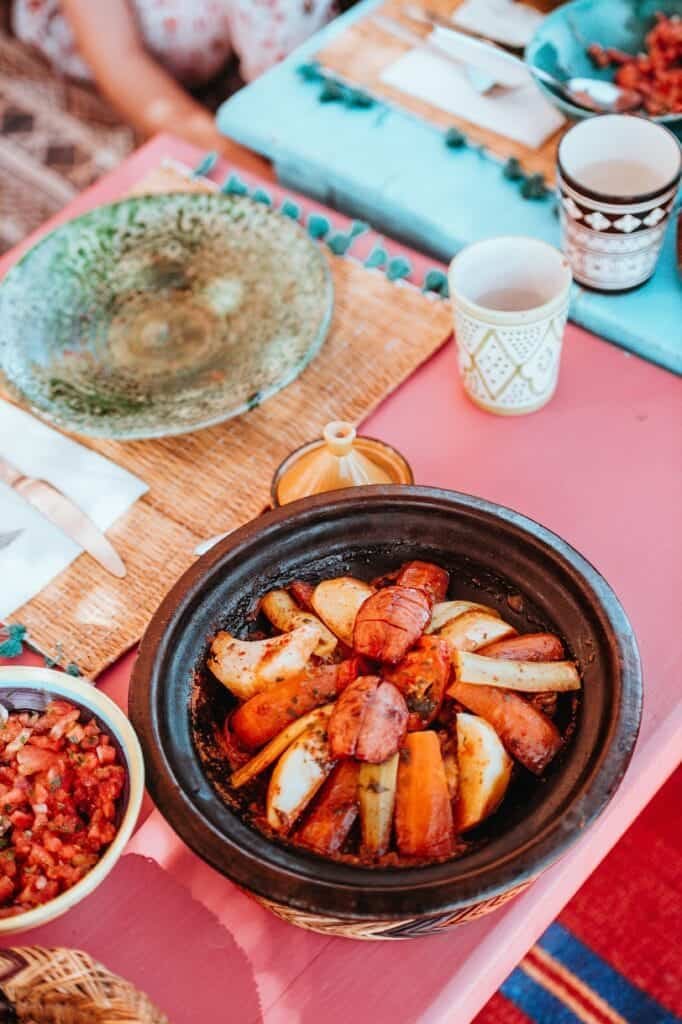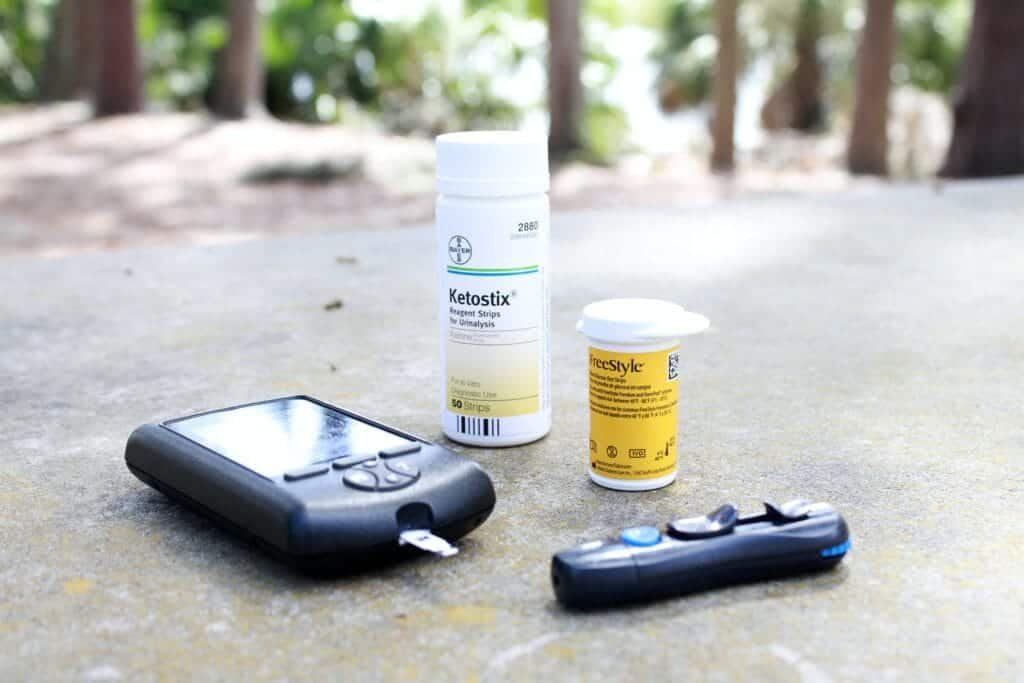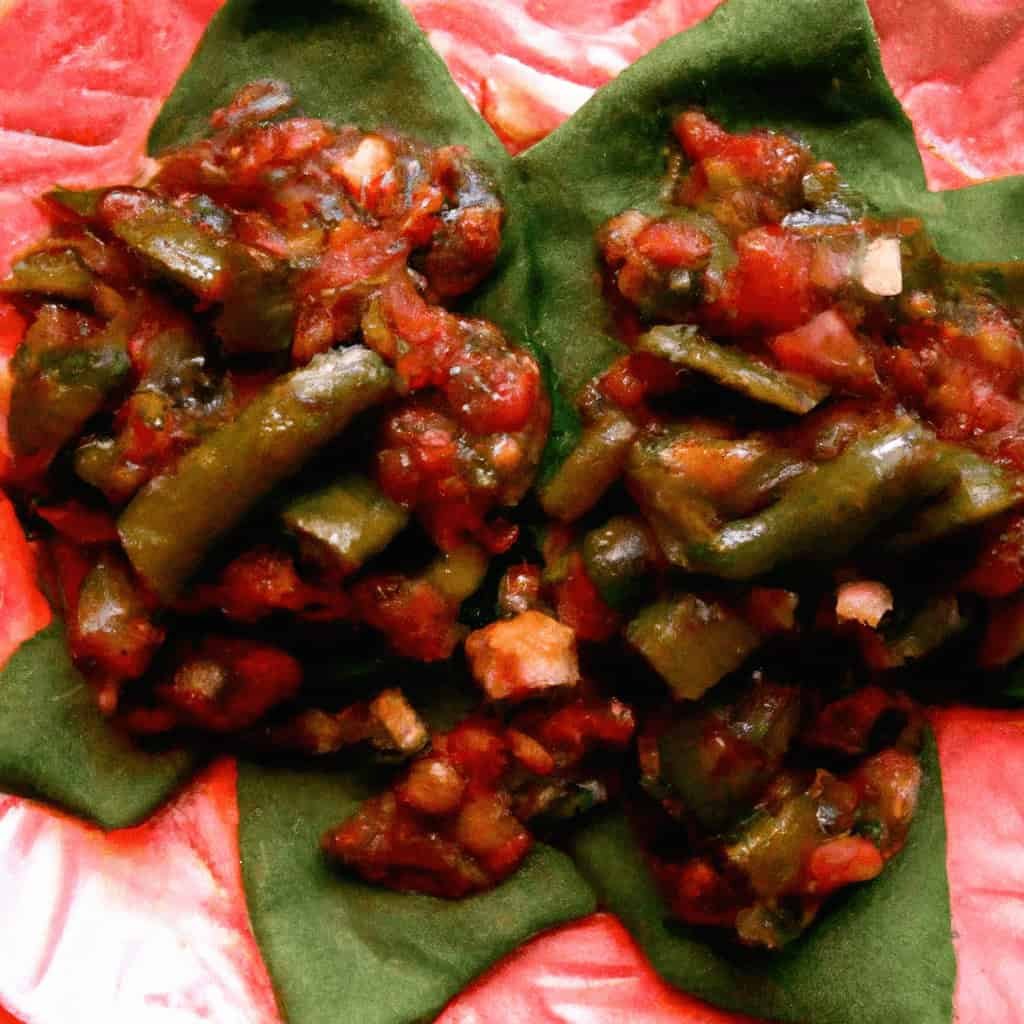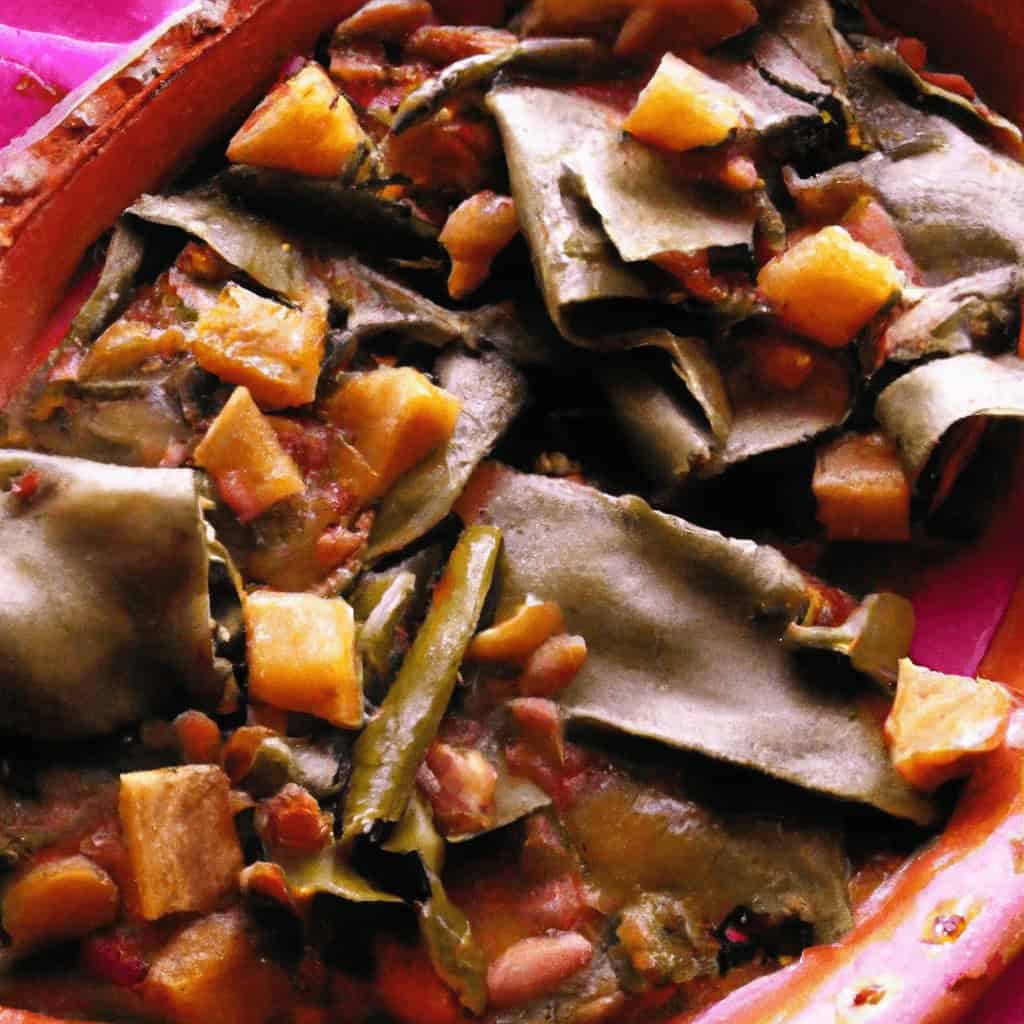If you’re looking for delicious recipes that not only taste great but are also suitable for a diabetic diet, then nopal is the answer! Nopal, also known as prickly pear cactus, is not only a versatile ingredient but also offers several health benefits. In this article, you’ll discover how easy it is to incorporate nopal into your meals, making them both diabetes-friendly and incredibly flavorful. Get ready to explore a world of tasty possibilities as we guide you through the process of creating nopal recipes that will satisfy your taste buds and keep your blood sugar levels in check.
Understanding Nopal and its Benefits
Nopal, also known as prickly pear cactus, is a versatile and nutritious vegetable that has been a staple in Mexican cuisine for centuries. It is not only delicious but also offers numerous health benefits, especially for those with diabetes. Understanding nopal and its benefits can help you incorporate this nutritious vegetable into your diabetic diet effectively.
What is Nopal?
Nopal is a type of cactus that belongs to the Opuntia genus. It is native to Mexico and has been cultivated for its culinary and medicinal uses for thousands of years. This vegetable is known for its distinctive paddle-shaped leaves, which can range in color from green to purple. Nopal has a unique flavor that is often described as mild and slightly tangy.
Benefits of Nopal for Diabetics
Nopal is particularly beneficial for diabetics due to its low glycemic index and high fiber content. The glycemic index is a measure of how quickly a food raises blood sugar levels. Foods with a low glycemic index are digested more slowly, resulting in a more gradual and controlled increase in blood sugar levels. Nopal has a very low glycemic index, making it an excellent choice for individuals with diabetes.
Additionally, nopal is rich in dietary fiber, which can help regulate blood sugar levels by slowing down the absorption of sugar into the bloodstream. This can prevent sudden spikes in blood sugar and promote better overall glycemic control. The high fiber content of nopal also contributes to feelings of fullness and can aid in weight management, which is important for diabetics.
Furthermore, nopal contains antioxidants and other beneficial compounds that may help reduce inflammation, improve insulin sensitivity, and protect against certain complications associated with diabetes. Including nopal in your diabetic diet can provide you with these valuable health benefits while adding variety to your meals.
Guidelines for Preparing Nopal on a Diabetic Diet
When it comes to preparing nopal on a diabetic diet, there are a few guidelines you should follow to ensure that you are maximizing its nutritional benefits and minimizing its impact on blood sugar levels.
Choosing Fresh and Organic Nopal
To begin, always opt for fresh and organic nopal whenever possible. Fresh nopal will have the best flavor and texture, and organic options are free from potentially harmful pesticides and chemicals. Look for nopal leaves that are firm and vibrant in color, with no visible signs of damage or spoilage.
Cleaning and Cutting Nopal
Once you have selected your nopal, it’s important to clean and prepare it properly. Start by washing the nopal under cool running water to remove any dirt or debris. Use a vegetable brush to gently scrub the surface, paying close attention to the spines. Next, carefully trim off the spines using a sharp knife or vegetable peeler.
After the spines have been removed, you can proceed to cut the nopal into the desired shape and size for your recipe. Some recipes call for the nopal to be sliced into strips, while others may require it to be diced or chopped. Take care when handling the nopal, as the remaining tiny spines can still prick you. It is advisable to use kitchen gloves or hold the nopal with a clean kitchen towel to protect your hands.
Cooking Methods for Nopal
Nopal can be cooked using a variety of methods, depending on your preferred flavors and textures. The most common cooking methods for nopal include grilling, stir-frying, boiling, and baking. Each method imparts a unique taste and texture to the vegetable, allowing you to experiment and find your favorite cooking technique.
Seasoning and Flavoring Options
To enhance the flavor of nopal, you can season it with a variety of herbs, spices, and condiments. Common seasonings for nopal include garlic, onion, chili powder, cumin, and lime juice. Experiment with different combinations to create a flavor profile that suits your palate. Just remember to choose low-sodium seasonings and avoid adding excess salt or sugar to keep your nopal dishes diabetes-friendly.

Cooking Nopal
Now that you are familiar with the guidelines for preparing nopal, let’s explore some delicious recipes that incorporate this versatile vegetable in various ways. From light salads to hearty main dishes, there are plenty of options to suit your taste preferences and dietary needs.
Nopal Salad
A refreshing and nutrient-packed nopal salad is an excellent choice for a light lunch or a side dish. To make a basic nopal salad, start by grilling or boiling the nopal paddles until tender. Once cooled, slice the nopal into thin strips and toss with a variety of fresh veggies, such as tomatoes, cucumbers, and bell peppers.
You can also add some protein to your salad by including grilled chicken breast, shrimp, or tofu. For extra flavor, drizzle the salad with a light vinaigrette made with olive oil, lime juice, and a sprinkle of chili powder. Garnish with fresh cilantro or parsley for an added touch of freshness.
Grilled Nopal
Grilled nopal is a popular way to enjoy this vegetable. To grill nopal, start by brushing the cleaned and trimmed paddles with a little olive oil and seasoning them with salt, pepper, and garlic powder. Place the nopal on a preheated grill or stovetop grill pan and cook for a few minutes on each side until they are lightly charred and tender.
Grilled nopal can be served as a side dish or used as a filling for tacos. You can also chop the grilled nopal and incorporate it into a stir-fry or scramble it with eggs for a flavorful and nutritious breakfast option.
Stir-Fried Nopal
Stir-frying nopal is another quick and easy way to prepare this vegetable. Start by heating a small amount of healthy oil, such as olive oil or avocado oil, in a skillet or wok over medium heat. Add the sliced nopal and stir-fry for a few minutes until it becomes tender and slightly golden.
You can customize your stir-fried nopal by adding other vegetables, such as bell peppers, onions, or zucchini. Season with garlic, ginger, and a splash of low-sodium soy sauce for a savory and satisfying dish. Serve the stir-fried nopal as a side dish or pair it with lean protein, such as grilled chicken or fish, for a complete meal.
Nopal Tacos
Nopal can be a delicious and healthy filling for tacos, providing a nutritious alternative to traditional meat fillings. To prepare nopal tacos, start by grilling or stir-frying the nopal until tender. Slice it into thin strips and sauté with onions and bell peppers for added flavor.
Warm up some whole-grain tortillas and fill them with the nopal mixture. Top the tacos with your favorite garnishes, such as fresh cilantro, diced tomatoes, and a squeeze of lime juice. You can also add a dollop of low-fat Greek yogurt or a sprinkle of crumbled queso fresco for a creamy and tangy element.
Nopal Soup
Nopal can be the star ingredient in a nourishing and comforting soup. To make a simple nopal soup, start by sautéing onions and garlic in a large pot until fragrant. Add diced nopal paddles and cook for a few minutes, then pour in vegetable or chicken broth and bring the mixture to a boil.
Reduce the heat and let the soup simmer until the nopal is tender. You can add other vegetables, such as carrots, celery, or corn, to make the soup heartier. Finish the soup with a sprinkle of fresh herbs, such as cilantro or parsley, and a squeeze of lime juice for a vibrant and flavorful bowl of goodness.
Baked Nopal Chips
If you’re craving a crispy and guilt-free snack, try making baked nopal chips. To make nopal chips, slice the cleaned and trimmed nopal into thin rounds. Toss the slices with a little olive oil, salt, and your favorite spices.
Place the seasoned nopal slices on a baking sheet lined with parchment paper and bake in a preheated oven at a low temperature, around 250°F (120°C), for about 1 to 2 hours. Keep an eye on the chips to prevent burning and flip them halfway through to ensure even crispness.
Baked nopal chips can be enjoyed on their own as a healthy snack or served with salsa, guacamole, or a low-fat yogurt dip. They offer a perfect alternative to traditional high-carb potato chips, providing a satisfying crunch without the excess carbs.
Substituting Ingredients in Nopal Recipes
When preparing nopal recipes, there are various ingredient substitutions you can make to suit your dietary preferences and requirements. Here are a few alternatives for commonly used ingredients in nopal recipes:
Alternative Sweeteners
If you are looking to reduce your sugar intake or have specific dietary restrictions, there are several alternative sweeteners you can use instead of regular sugar. Options such as stevia, monk fruit sweetener, or erythritol are low in carbohydrates and do not significantly impact blood sugar levels. Experiment with different sweeteners to find the ones that suit your taste and provide the desired level of sweetness.
Healthy Oil Options
When a nopal recipe calls for cooking oil, consider using healthier oil options that are lower in saturated fats. Extra-virgin olive oil, avocado oil, and coconut oil are good choices as they contain heart-healthy fats. Remember to use these oils in moderation as part of a well-balanced diet.
Low-Fat Dairy Alternatives
If you prefer to avoid or limit dairy products, there are several low-fat dairy alternatives that can be used in nopal recipes. For instance, unsweetened almond milk or coconut milk can be substituted for regular milk when making soups or smoothies. Greek yogurt can be replaced with dairy-free yogurt made from almond, coconut, or soy milk. These alternatives provide similar creamy textures and flavors without the lactose and excess fat.
Alternative Protein Sources
If you follow a vegetarian or vegan diet, you can easily substitute animal protein with plant-based protein sources in nopal recipes. For instance, grilled tofu or tempeh can be used instead of chicken in nopal tacos or stir-fries. Lentils or beans can be added to nopal soups or salads to boost protein content. Experimenting with various plant-based protein options will not only provide you with the necessary nutrients but also offer a broad range of flavors and textures.

Meal Planning with Nopal for Diabetics
When incorporating nopal into your diabetic diet, it’s important to consider proper meal planning to ensure a well-balanced and varied approach. Here are some tips for meal planning with nopal:
Balancing Macronutrients
To maintain stable blood sugar levels throughout the day, it’s essential to strike a balance between carbohydrates, protein, and fats in your meals. Nopal provides a good source of fiber and carbohydrates, while lean protein sources and healthy fats can be incorporated through ingredients like grilled chicken, fish, or avocado. Aim for a balance of macronutrients in each meal to provide sustained energy and promote healthy blood sugar control.
Portion Control
While nopal is a nutritious vegetable, portion control is still key to managing your blood sugar levels. Be mindful of your serving sizes and aim to fill half of your plate with non-starchy vegetables, such as nopal, and divide the remaining half between protein and whole grains. By practicing portion control, you can enjoy the benefits of nopal without consuming excessive amounts of carbohydrates.
Including Fiber-rich Foods
Nopal is already high in fiber, but it’s also beneficial to include other fiber-rich foods in your meals to promote satiety and regulate blood sugar levels. Whole grains, such as quinoa or brown rice, legumes, and other vegetables are excellent sources of dietary fiber. Incorporating these foods into your diet alongside nopal will enhance the overall nutritional value of your meals and aid in digestion.
Incorporating Variety in Nopal Meals
To prevent boredom and ensure a well-rounded diet, it’s essential to incorporate a variety of ingredients and cooking techniques in your nopal meals. Experiment with different vegetables, proteins, and seasonings to keep your taste buds excited. This variety will also provide a broader range of nutrients and flavors, making your meals more enjoyable and satisfying.
Mindful Eating Practices
In addition to meal planning, practicing mindful eating can have a positive impact on your overall well-being and blood sugar control. Take the time to savor the flavors and textures of your nopal dishes, and eat slowly to allow your body to recognize feelings of fullness. By being present and mindful during meals, you can develop a healthy relationship with food and make conscious choices that support your diabetes management.
Nopal Recipes with Low Glycemic Index
Here are some nopal recipes with a low glycemic index that you can incorporate into your diabetic diet:
Nopal Breakfast Smoothie
Ingredients:
- 1 cup diced nopal
- 1 cup unsweetened almond milk
- ½ cup frozen berries (such as blueberries or raspberries)
- 1 tablespoon chia seeds
- 1 teaspoon honey or alternative sweetener (optional)
- Ice cubes (optional)
Instructions:
- Place all the ingredients in a blender and blend until smooth and creamy.
- If desired, add ice cubes for a colder and thicker consistency.
- Pour into a glass and enjoy this refreshing and fiber-rich smoothie to start your day.
Nopal and Vegetable Stir-Fry
Ingredients:
- 2 nopal paddles, sliced
- 1 bell pepper, sliced
- 1 zucchini, sliced
- 1 onion, sliced
- 2 cloves of garlic, minced
- 1 tablespoon low-sodium soy sauce
- 1 tablespoon olive oil
- ½ teaspoon ginger powder
- Salt and pepper to taste
- Fresh cilantro for garnish
Instructions:
- Heat the olive oil in a large skillet or wok over medium heat.
- Add the garlic and ginger powder, and sauté for about 1 minute until fragrant.
- Add the nopal, bell pepper, zucchini, and onion to the skillet, and stir-fry for 5-7 minutes until the vegetables are tender-crisp.
- Stir in the soy sauce and season with salt and pepper to taste.
- Garnish with fresh cilantro and serve this flavorful and colorful stir-fry as a side dish or with a lean protein of your choice.
Nopal and Chicken Skewers
Ingredients:
- 2 nopal paddles, sliced
- 2 chicken breasts, cut into cubes
- 1 bell pepper, cut into squares
- 1 red onion, cut into wedges
- 2 tablespoons olive oil
- 2 cloves of garlic, minced
- Juice of 1 lime
- 1 teaspoon cumin
- Salt and pepper to taste
- Skewers
Instructions:
- In a bowl, combine the olive oil, minced garlic, lime juice, cumin, salt, and pepper.
- Add the chicken cubes to the bowl and marinate in the refrigerator for at least 30 minutes.
- Preheat your grill or grill pan to medium-high heat.
- Assemble the skewers by alternating the chicken cubes, nopal slices, bell pepper, and onion.
- Grill the skewers for about 10-15 minutes, turning occasionally, until the chicken is cooked through and the vegetables are tender.
- Serve these flavorful and protein-packed nopal and chicken skewers as a main dish with a side of whole-grain rice or salad.
Nopal Stuffed Bell Peppers
Ingredients:
- 4 bell peppers (any color), tops removed and seeds removed
- 2 nopal paddles, diced
- 1 cup cooked quinoa
- ½ cup black beans, rinsed and drained
- ½ cup corn kernels
- 1 small onion, diced
- 2 cloves of garlic, minced
- 1 tablespoon olive oil
- ½ teaspoon chili powder
- Salt and pepper to taste
- Shredded low-fat cheese (optional)
- Fresh cilantro for garnish
Instructions:
- Preheat the oven to 350°F (175°C).
- In a large skillet, heat the olive oil over medium heat.
- Add the diced nopal, onion, and garlic, and sauté until the nopal is tender, about 5-7 minutes.
- Stir in the cooked quinoa, black beans, corn kernels, chili powder, salt, and pepper. Cook for an additional 2-3 minutes to heat through.
- Place the bell peppers in a baking dish and fill them with the nopal and quinoa mixture.
- If desired, sprinkle shredded low-fat cheese on top of each stuffed pepper.
- Cover the dish with aluminum foil and bake for 25-30 minutes until the bell peppers are tender and the filling is heated.
- Garnish with fresh cilantro and serve these colorful and nutritious nopal stuffed bell peppers as a satisfying and balanced meal.
Nopal and Shrimp Salad
Ingredients:
- 2 nopal paddles, sliced
- 1 cup cooked shrimp, peeled and deveined
- 2 cups mixed salad greens
- 1 tomato, diced
- ½ cucumber, sliced
- 1 avocado, sliced
- 2 tablespoons lime juice
- 1 tablespoon olive oil
- ½ teaspoon honey or alternative sweetener (optional)
- Salt and pepper to taste
Instructions:
- Cook the nopal slices by grilling or boiling until tender. Let them cool.
- In a large bowl, combine the salad greens, cooked shrimp, tomato, cucumber, and avocado.
- In a separate small bowl, whisk together the lime juice, olive oil, honey (if using), salt, and pepper to make a simple vinaigrette.
- Add the cooled nopal slices to the salad and drizzle the vinaigrette over the top.
- Toss gently to combine and serve this vibrant and protein-rich nopal and shrimp salad as a refreshing main dish or a hearty side salad.
Nopal and Mushroom Soup
Ingredients:
- 2 nopal paddles, diced
- 8 ounces mushrooms, sliced
- 1 small onion, diced
- 2 cloves of garlic, minced
- 4 cups vegetable broth
- 1 tablespoon olive oil
- 1 teaspoon dried thyme
- Salt and pepper to taste
- Fresh parsley for garnish
Instructions:
- Heat the olive oil in a large pot over medium heat.
- Add the diced nopal, mushrooms, onion, and garlic, and sauté until the vegetables are tender, about 5-7 minutes.
- Pour in the vegetable broth and bring the mixture to a boil.
- Reduce the heat and let the soup simmer for about 15-20 minutes to allow the flavors to meld together.
- Season with dried thyme, salt, and pepper to taste.
- Serve this hearty and comforting nopal and mushroom soup garnished with fresh parsley for added freshness.
Nopal Guacamole
Ingredients:
- 2 nopal paddles, diced
- 2 ripe avocados
- 1 tomato, diced
- ¼ cup diced onion
- 2 tablespoons chopped fresh cilantro
- Juice of 1 lime
- 1 jalapeño pepper, seeded and minced (optional for heat)
- Salt and pepper to taste
Instructions:
- Cook the diced nopal by grilling or boiling until tender. Let it cool.
- In a bowl, mash the avocados with a fork until desired consistency.
- Add the cooled diced nopal, tomato, onion, cilantro, lime juice, and minced jalapeño (if using).
- Stir well to combine all the ingredients and season with salt and pepper to taste.
- Serve this flavorful and nutrient-packed nopal guacamole with whole-grain tortilla chips or as a delicious topping for your favorite Mexican dishes.
Nopal Salsa
Ingredients:
- 2 nopal paddles, diced
- 2 tomatoes, diced
- ½ onion, diced
- 1 jalapeño pepper, seeded and minced
- Juice of 1 lime
- 2 tablespoons chopped fresh cilantro
- 1 clove of garlic, minced
- Salt and pepper to taste
Instructions:
- Cook the diced nopal by grilling or boiling until tender. Let it cool.
- In a bowl, combine the cooled diced nopal, tomatoes, onion, jalapeño, lime juice, cilantro, and minced garlic.
- Stir well to mix all the ingredients together.
- Season with salt and pepper to taste.
- Let the flavors meld together for at least 30 minutes before serving to allow the salsa to develop its full taste.
- Enjoy this vibrant and tangy nopal salsa with tortilla chips, grilled meats, tacos, or as a condiment in various dishes.
Nopal Stuffed Portobello Mushrooms
Ingredients:
- 2 nopal paddles, diced
- 4 large Portobello mushrooms, stems removed
- ½ cup cooked quinoa
- ¼ cup diced red bell pepper
- ¼ cup diced green bell pepper
- ¼ cup diced onion
- 2 cloves of garlic, minced
- 2 tablespoons olive oil
- 1 teaspoon dried oregano
- Salt and pepper to taste
- Fresh basil for garnish
Instructions:
- Preheat the oven to 375°F (190°C).
- In a skillet, heat the olive oil over medium heat.
- Add the nopal, bell peppers, onion, and garlic, and sauté until the vegetables are tender, about 5-7 minutes.
- Stir in the cooked quinoa, dried oregano, salt, and pepper, and cook for an additional minute to combine the flavors.
- Place the Portobello mushrooms on a baking sheet lined with parchment paper.
- Fill each mushroom with the nopal and quinoa mixture.
- Bake in the preheated oven for about 15-20 minutes until the mushrooms are cooked through and tender.
- Garnish with fresh basil and serve these delicious nopal stuffed Portobello mushrooms as a satisfying and nutrient-dense main dish.

Including Nopal in Everyday Diabetic Diet
Now that you have a variety of nopal recipes at your disposal, it’s important to understand how to incorporate nopal into your everyday diabetic diet. Here are some suggestions on how to include nopal in different meals and dishes throughout the day.
Nopal as a Side Dish
One way to include nopal in your everyday diabetic diet is by serving it as a side dish. Grilled, stir-fried, or baked nopal can be paired with lean proteins, such as grilled chicken or fish, and a serving of whole grains, such as quinoa or brown rice. This combination provides a well-balanced meal that is packed with essential nutrients and is diabetes-friendly.
Nopal in Main Dishes
Nopal can be the star ingredient in main dishes, whether it’s in salads, stir-fries, or stuffed vegetables. Consider preparing a nopal and shrimp salad for a light and refreshing lunch or making nopal and chicken skewers for a protein-packed dinner. By incorporating nopal into your main dishes, you can enjoy its unique flavor and reap its nutritional benefits.
Nopal in Snacks and Appetizers
When it comes to snacks and appetizers, nopal can be a versatile addition that adds a healthy twist to traditional favorites. You can serve baked nopal chips with homemade salsa or guacamole as a nutritious alternative to regular potato chips. Alternatively, include nopal in a vegetable platter with other crunchy snacks like carrot sticks and cucumber slices. These options provide a satisfying and guilt-free way to enjoy snacks while staying on track with your diabetic diet.
Nopal in Salads
Salads are an excellent way to incorporate nopal into your everyday diabetic diet. Whether you prefer the simplicity of a nopal and vegetable salad or the heartiness of a nopal stuffed bell pepper salad, you can enjoy a wide variety of flavors and textures while boosting your vegetable intake. Consider experimenting with different combinations of vegetables, proteins, and dressings to keep your salads exciting and nutritious.
Nopal in Salsas and Dressings
Nopal can also add a unique twist to salsas and dressings, providing an extra boost of flavor and nutrition. By incorporating diced or grilled nopal into your favorite salsa recipe, you can create a tangy and vibrant condiment that pairs well with grilled meats, tacos, or tortilla chips. Similarly, adding blended nopal into homemade dressings can elevate the taste and nutritional value of your salads. Be creative and explore different flavor combinations to find your favorite nopal-based salsas and dressings.
Nopal in Desserts
Yes, you can even incorporate nopal into your diabetic-friendly desserts. While nopal itself is not typically considered a sweet vegetable, it can be used in creative ways to add moisture and nutrients to desserts. For example, you can blend cooked and cooled nopal into smoothies and popsicles, or incorporate pureed nopal into baked goods like muffins or cakes. By doing so, you can enjoy a naturally sweetened treat while benefiting from the fiber and nutrients that nopal offers.
Tips for Grocery Shopping and Storage
To fully enjoy the benefits of nopal in your diabetic diet, it’s important to follow these tips for grocery shopping and storage:
Selecting Fresh and Ripe Nopal
When shopping for nopal, choose paddles that are firm and vibrant in color. Avoid any paddles that appear wrinkled or discolored, as this may indicate spoilage. Additionally, opt for medium-sized paddles, as they tend to have a better texture and flavor compared to larger or smaller ones.
Proper Storage of Nopal
To extend the shelf life of nopal, it’s recommended to store it in a cool and dry place, such as the refrigerator vegetable drawer. Place the nopal paddles in a perforated plastic bag or wrap them in a damp kitchen towel to prevent them from drying out. Proper storage will help preserve the freshness and quality of the nopal for up to a week.
Choosing Nopal Products and Supplements
If fresh nopal is not readily available or convenient for you, consider using nopal products or supplements as an alternative. Look for dried nopal, nopal juice, or nopal powder that is made from organic and high-quality ingredients. When purchasing nopal supplements, consult with a healthcare professional or a registered dietitian to ensure it is safe and appropriate for your individual needs.

Consulting with a Medical Professional
Before making any significant changes to your diet, it is crucial to consult with a medical professional, such as a doctor or a registered dietitian, especially if you have diabetes. Discussing the consumption of nopal and its potential effects on your blood sugar levels is important to ensure that it aligns with your specific health needs and goals.
Discussing Nopal Consumption with a Doctor or Dietitian
A medical professional can provide personalized advice and guidance regarding the inclusion of nopal in your diabetic diet. They can help you determine the appropriate portions, frequency of consumption, and potential interactions with any medications you may be taking. They can also address any concerns or questions you may have and offer suggestions that are tailored to your unique health situation.
Monitoring Blood Sugar Levels
When incorporating nopal into your diet, it is essential to monitor your blood sugar levels closely. Regularly test your blood sugar levels and keep a record of your readings to identify any patterns or trends. By closely monitoring your blood sugar levels, you can make informed decisions about the amount of nopal to include in your meals and adjust as needed to maintain healthy blood sugar control.
Understanding Individual Nutritional Needs
Every individual’s nutritional needs are different, and the role of nopal in your diabetic diet may vary depending on your specific health goals and requirements. A medical professional can help you understand how nopal fits into your overall dietary plan and its role in managing your diabetes effectively. They can provide personalized advice considering your unique circumstances and help you develop a comprehensive meal plan that best supports your health.
Conclusion
Incorporating nopal into a diabetic diet brings a host of benefits. From its low glycemic index to its high fiber content, nopal offers numerous advantages for individuals with diabetes. By following the guidelines for preparing nopal, such as choosing fresh and organic sources and using appropriate cooking methods, you can optimize its nutritional value and incorporate it into a variety of delicious recipes.
Experimenting with nopal recipes allows you to enjoy the versatile flavors and textures of this nutritious vegetable. With options ranging from salads and grilled dishes to soups and snacks, you can find a nopal recipe for every occasion and dietary preference. Substitute ingredients as needed, practice mindful eating, and balance your macronutrients to create diabetes-friendly meals that are both satisfying and nourishing.
When including nopal in your everyday diabetic diet, remember to plan your meals thoughtfully, incorporate variety, and consult with a medical professional to ensure that it aligns with your specific health needs. By doing so, you can fully enjoy the benefits of nopal while managing your diabetes effectively and deliciously. So go ahead, explore the vibrant world of nopal recipes and savor the flavors of this remarkable vegetable!


